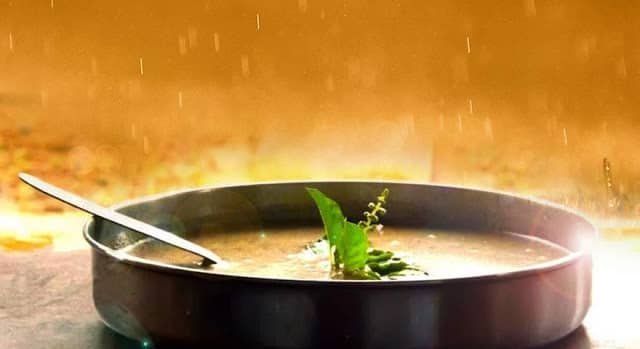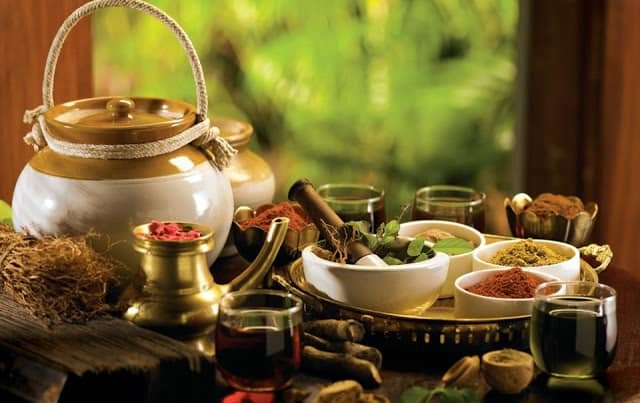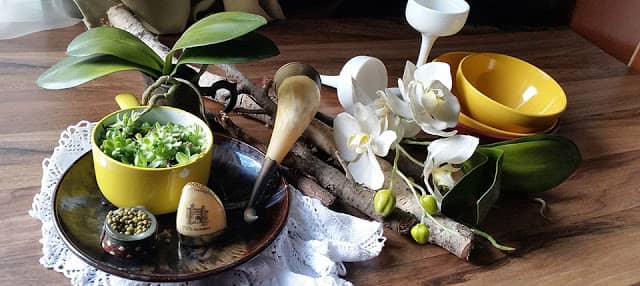Ayurveda is the ‘Science of life’. Its fundamental and foremost principle is to maintain the health of a healthy individual by following proper diet and lifestyle regimen rather than to treat or cure an ailment. To achieve this goal, Ayurveda explains various protocols as per the need and necessity of an individual. These protocols vary from person to person as Ayurveda doesn’t accept ‘one-size-fits-all’ as true. As per Ayurveda no two persons are exactly alike in the given time. Hence the treatment is recommended keeping a variety of aspects of ailment and ailing individual in mind.
Apart from age, sex, constitution etc of the sick, various other external factors too are taken into consideration while treating a person, which may intermingle with the wellness of that individual. For example, the environmental factors including temperature, humidity, wind, rain, clouds, the nature of the land, water of the given place etc are kept in mind while designing a treatment protocol. To be more precise, the treatment plan for an individual dwelling in the mountainous terrain of Kashmir will be different from a person residing in tropical Punjab. Likewise choice of drugs varies from season to season.
TRIDOSHA
This whole Universe is composed of five basic elements called Panchamahabhuta or Panchatatva viz., Ether (Akash), Air (Vayu), Fire (Agni), Water (Jala) and Earth (Prithvi); and man being the microcosm of this Universe, too is made up of these five basic elements. These five elements interact in specific patterns constituting Vata, Pitta & Kapha collectively called as Tridosha.
Tridosha are basic humors or bio-entity of the body. However, they can’t be seen being a non-physical entity, yet are evident through their bodily functions and typical symptoms. The balanced state of Tridoshas symbolizes health and imbalance of the same is considered as illness.
RITUCHARYA
Ayurveda advocates that our body is affected by seasonal changes. As stated above, man is microcosm of the Universe. Vata, Pitta &Kapha govern all bodily activities of human as Air, Sun and Water do in the ecosystem of earth. As we see various changes in ecosystem such as scorching heat in summers, biting cold in winters etc, man being a part of the same ecology, his body is also influenced by such alterations in external environment. With the change in season, the change is evident in the environment we live in. If body refuses to adopt the stressors arose because of the changes in specific traits of seasons, it may lead to imbalance of Tridosha, which in turn may render the body highly susceptible to one or other kinds of disorders. To avoid this imbalance of Tridosha, Ritucharya (seasonal regimen) has been mentioned in the classics of Ayurveda.
Lifestyle diseases are a result of an inappropriate relationship of people with their environment. Ayurveda has depicted various rules and regimens regarding diet and behavior to acclimatize seasonal alterations and thus prevents the derangement of homeostasis which may cause various diseases such as obesity, diabetes, hypertension, cancer etc. Ritucharya is a mode of living one’s life in context of the seasons. It is an ancient Ayurvedic practice literally meaning ‘seasonal regimen’. It recommends different diets and lifestyle schedules in each season which help in retaining the health. This could range from obvious choices such as wearing warmer clothes during the winter to seasonal eating habits. The importance of Ritucharya in Ayurveda is that the principles from it can be applied daily to benefit one’s body.
SEASONS
Ayurveda describes six seasons, each of two months duration, namely Shishira, Vasanta, Grishma, Varsha, Sharada and Hemanta in a year. A year (Samvatsara) is further divided into two semesters (Ayana), consisting of six months with three seasons each.
(1) Uttarayana or Northern Solstice – It indicates the ascent of the Sun or when the Sun appears to move northward. It comprises ofShishira, Vasanta & Grishma seasons. It is Agneya (Fire-like property) in nature.
(2) Dakshinayana or Southern Solstice – Dakshinayana indicates the descent of the sun or when the Sun appears to move southward. It comprises of Varsha, Sharad and Hemant seasons.
Uttarayana or Adana Kala or Northern Solstice
Uttarayana is also called Adana Kala. Adana means ‘to take away’. In Indian subcontinent this period may range from mid – January to mid – July when warmness and dryness in atmosphere increases and reaches its peak. The Sun and the wind become extremely powerful during this half of the year. The scorching heat of the Sun takes away the moisture and cooling quality of Earth leaving it dry and rough. Likewise energy and strength of the creatures also dries up leaving them debilitated. Adana Kala brings increase in the Tikta (bitter),Kashaya (astringent), and Katu (pungent) rasa (taste) respectively, in the successive ritus, which brings about dryness in the body and reduces the Bala (strength).
According to modern science this can be compared with the movement of Earth around the Sun to the position in which the rays of the Sun fall perpendicularly at 30 degree meridian of the North Pole on June 21st every year, called as summer solstice.
Dakshinayana or Visarga Kala or Southern Solstice
Dakshinayana, also known as Visarga Kala is for giving of strength and vigour in all living beings. During this period, Moon dominates the Sun and anabolic activity dominates over the catabolic activity in the environment. The Sun releases the strength to the people while Earth is cooled down due to the clouds, rain and cold wind. Unctuousness sets in the atmosphere and Amla (sour), Lavana (salty), and Madhura(sweet) Rasa are predominant, so the strength of person enhances during this period. This period ranges from mid – July to mid – January in the Indian subcontinent.
According to modern science, this can be compared with the movement of the earth around the sun to the position in which the rays of the sun fall over 30 degree meridian of the South Pole perpendicularly on December 21st every year, called as winter solstice.

CLASSIFICATION OF SEASONS
TRIDOSHA STATUS IN DIFFERENT SEASONS
 Vata dosha accumulates during the dry or dehydrating heat of the summer. In rainy season, due to constant raining, the moisture and cold weather aggravates Vata. The apetite (Agni) becomes low and causes indigestion.
Vata dosha accumulates during the dry or dehydrating heat of the summer. In rainy season, due to constant raining, the moisture and cold weather aggravates Vata. The apetite (Agni) becomes low and causes indigestion.
Pitta accumulates during the rainy season due to the acidic conditions of the atmosphere and a weakened digestion. It is aggravated during autumn when the heat returns .This occurs after the cooling spell of the rainy season.
Kapha accumulates during the cold season due to the cold and dampness caused by the winds, clouds and rain. It gets aggravated during the spring when the warm weather liquefies the accumulating Kapha.
SEASONAL VARIATION IN HUMAN STRENGTH
In the beginning of Visarga Kala and ending of Adana kala, i.e., during Varsha and Grishma, strength gets weak and debility occurs. In the middle of the solstices, that is, during Sharata and Vasanta, strength remains in moderate grade and during the end of Visarga Kala and in the beginning of Adana Kala, that is, during Hemanta and Shishira, maximum strength is seen.
SEASONAL VARIATION IN POTENCY OF TASTES
The following table summarizes the tastes which are more powerful and hence can be included in the diet in each of the six seasons.
Conclusion:
As adaptations according to the changes, is the key for survival, the knowledge of Ritucharya (regimen for various seasons) is thus important.
Note: Article is Originally Written by Dr VD Singh and Author can be reachable at Ayurcare.
With Regards,Dr V D Singh MD (Ay)
Ayurcare, Vijaypur (Jammu)
Mobile : +91- 9419180272 | +91- 9622361874


















